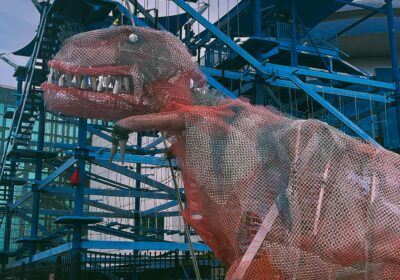Victims brought to life through sculpture

Participants in a USF forensics workshop use 3D printed skulls and clay to sculpt busts of victims of unsolved crimes. ORACLE PHOTO/CHELSEA MULLIGAN
Currently, there are more than 90 unsolved homicides in Hillsborough County alone.
USF’s anthropology department is trying to put a dent in some of Florida’s cold cases with a week-long workshop on forensics, which ends Friday.
The workshop, taught by forensics imaging specialist Joe Mullins from the National Center of Missing & Exploited Children, shows how to sculpt faces based on forensic remains. Mullins, who has worked on age-progression pictures for fifteen years with the center, wanted to bring the idea to USF after teaching a similar class in January at the New York Academy of Art.
“It’s horrifying, and it’s sad. I’ve been doing this for 15 years, and I can’t think of a way to sum up how devastating it is. I’m holding a skull of a 10-year-old little boy,” he said in the center’s video from the January class. “You start to see that individual … people ask me, ‘How do you know when to stop (sculpting)?’ I stop when I see somebody staring back at me.”
Erin Kimmerle, a USF anthropology professor and director for the Florida Institute of Forensic Anthropology & Applied Sciences, agreed to partner with Mullins for an opportunity to solve some crimes that have turned into cold cases.
“One of the things we’re trying to teach in this class is what makes us who we are and what we look like,” Kimmerle said.
Students sculpt the faces on 3D prints of human skulls from unsolved cases, an idea Mullins had for his January class. The skulls were printed at USF’s Visualization Center by Kimmerle.
Mullins teaches in a hands-on way, using student work to show how to sculpt eyebrows, hair and facial features in a realistic and detail-oriented way, in hopes of creating an accurate likeness. He said he discourages students from using “artistic license,” since the goal is to make a recognizable face.
Workshop attendees also have to be aware of changing fashion trends and historical context, since the oldest of the nine cases goes back to 1967. The cases also involve an array of ages, ethnicities and genders, requiring artists to be able to sculpt a variety of appearances.
Julia DeCleene, a senior majoring in studio art, is the only USF student attending the workshop. She works alongside members of law enforcement and other artists.
DeCleene said clay is a typical medium for her artwork, but she has never worked on something like this before.
“I’m feeling more connected because I’m giving him a face,” she said.
Another workshop attendee, Chrissie Ross, works with the Ohio Bureau of Criminal Investigation. She said she has been working in law enforcement for 20 years, and Ohio’s attorney general wants to create a forensic artist unit.
“(The sculpture is) starting to look more like a person. It’s starting to get there. There is a connection to it. I just hope she can get identified,” she said.
The case Ross is working on, unsolved since 1972, involves the remains of a white woman found in Brooksville, Florida.
Mullins said he hopes, most of all, the project can help solve some long-cold cases. He said, during his class in New York, one of the victims was identified from a bust.
“Just because they’re found here, doesn’t mean they’re from here,” he said. “We need as many eyes as possible. The right person needs to see it.”
The finished sculptures will be open to the public at the Richard A. and Patricia P. Waterman Gallery, located in SOC 111 after Oct. 16. Those with information regarding the identity of any busts can contact Crime Stoppers of Tampa Bay at 1-800-873-TIPS.







